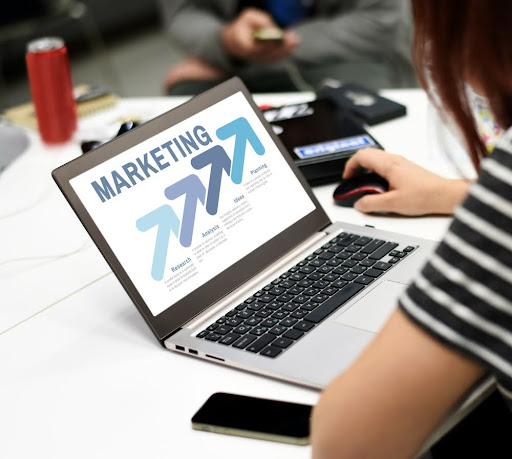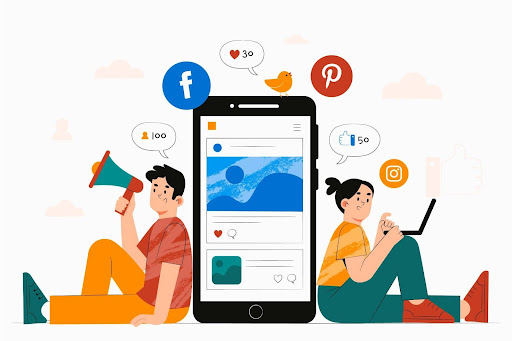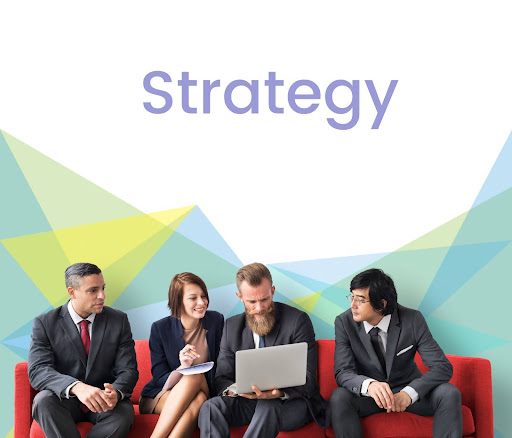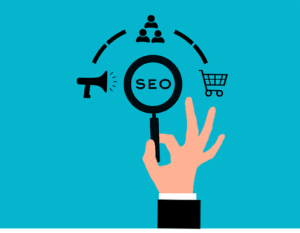Digital Marketing Replace Traditional Marketing?
With the perpetual disruption through which companies interact with clients in today’s Digital Era, the business-to-consumer (B2C) relationship is no longer what it used to be.
– 20 mins

Monitoring your website’s organic rankings helps you know how well your site is performing in the organic search results. You will be able to see your site’s organic traffic in your Google Analytics dashboard. You can see the analysis when people search for specific keywords related to your business and click through your site.
Driven by the growth of the internet and digital device ownership, marketing has entered an age where online channels are king (or should we say queen?), strategy is data-driven, and engagement must take place in real-time. With digital marketing picking up the pace, comes a question: Is traditional marketing dying?
In an ever more connected but fragmented world, every size of businesses is struggling to engage with potential customers. Whereas traditional marketing efforts such as TV, Print, and Billboards among many others have since become the status quo for brand building and promotional outreach Digital Marketing provides advantages directed towards blocking agencies from ample targeting their audiences to ensure they spend wisely while ensuring more actionable results are returned in real-time.
Traditional Advertising Explained
Traditional marketing has been the foundation for business promotion over decades, using methods that have had a lot of human trust and familiarity with them. In many industries, traditional marketing even in this day and age still has an important place for different sectors. If you want to appreciate this age-old battle between digital marketing and traditional methods properly, we need to start from the point of knowing what exactly it means by Traditional Marketing with its plus and minus points.
What is Traditional Marketing?
Traditional marketing means using traditional offline methods to reach a mass audience. Yet advertising experts say they are the foundational methods of advertising, on which much of 20th-century American commerce was constructed.
- Television and Radio Advertisement: Advertisements that one sees on Television or listens to when he/she hears a radio station, are intended for a mainstream crowd focusing totally on individual socioeconomics because of potentially periodic programming hours.
- Print Advertising (Newspapers, Magazines, Brochures, and Flyers): Newspapers, magazines brochures, and flyers have always been sought to show what a business is providing in terms of products to raise public awareness.
- Billboards/ Outdoor Advertising: Billboards are huge visual ads placed in prime locations aiming to attract passersby.
- Direct Mail: Sending promotional materials, catalogs, or coupons directly to consumers’ homes is a common strategy for businesses trying to engage their target audience.
Event Sponsorships and Trade Shows: Attending or sponsoring events give businesses opportunities to meet potential customers in person.
Beneficial Aspects of Traditional Marketing
Even though digital marketing trends have emerged, some of these traditional methods can still do wonders for your business:
- Wide Range: Methods of traditional marketing, especially television and radio advertising help create visibility for your brand on a national or global level due to the wide coverage they offer.
- Tangible Materials: Print ads, brochures, and direct mail put something actually in the hands of consumers which creates a more lasting impression that digital ads can be hard-pressed to replicate.
- Brand Familiarity and Trust: Older generations are typically more comfortable with traditional advertising methods due to their longevity as standard parts of life.
- Regional Focus: classic marketing strikes gold with regional marketers — companies who wish to work in specific geographic areas may use the techniques of local Television advertising, radio, or billboards.
- Memorable impact: good TV commercials, strong billboards, and print ads that often hang around to form long-lasting brand reinterpretations.
Drawbacks of Conventional Marketing
Although traditional marketing has its benefits, it is associated with several constraints that prompted companies to look for digital options.
- Expensive: Also, traditional advertisements, especially TV and Print ads can be very expensive often too costly for small businesses that are on a tight budget.
- Measuring ROI: Traditional marketing makes it difficult to measure the return on investment (ROI )compared with digital marketing which provides you with real-time analytics.
- Lack Of Interaction And Engagement: Traditional marketing is usually one way, it lacks consumer interaction and feedback in real-time.
- Younger Audiences: As younger consumers continue to shift from traditional networks toward digital alternatives, the efficacy of media advertising in reaching these segments may weaken.
- Inflexibility: Once a traditional marketing campaign is in the air, there´s no turning back; it does not allow to implement amendments or optimizations intrigued by performance as in digital marketing where everything can be changed almost in real-time.
How Traditional Marketing Stands Today
Though time has since brought forth digital marketing, traditional formats still appear in all industries, making integration a powerful tool. As a result, the brands with deep pockets carry on spending in TV spots, print ads, and outdoors to keep their brand fresh in mind. Additionally, traditional marketing is combined with digital tactics as part of an integrated marketing strategy where both approaches work together to achieve the greatest reach and impact.
The Rise of Digital Marketing
The world is getting more complex and more globalized with each passing day; therefore, it changes beyond recognition from all areas especially when diversity poses serious competition as the new positive discrimination in a digitally driven environment. Digital marketing is the new king, it enables businesses to find innovative serving solutions for their subset of audiences. This chapter explores what digital marketing is, its advantages, and the challenges faced by marketers in this on-the-go dynamic field.

What Is Digital Marketing?
Digital marketing is a powerful online advertising strategy that leverages the Internet and digital technologies to promote and sell your products or services. This approach utilizes a variety of platforms, including websites and social media channels, to reach and engage with your target audience effectively. This is in contrast with traditional offline marketing which uses the internet and digital devices to engage with distant prospects live. Digital marketing Main Channels:
- SEO (Search Engine Optimization): improving your website and content to boost its visibility and ranking on search engine results pages (SERPs). While digital ads focus on targeting certain demographics, SEO is geared towards increasing your organic (unpaid) traffic by optimizing the function of a website for search engines like Google. For more advanced techniques and better long-term results, many businesses choose to hire an SEO agency to ensure their strategies are expertly crafted and implemented effectively.
- Pay-Per-Click Advertising (PPC): A form of online advertising in which companies pay a fee each time one of their ads is clicked/browsed. PPC ads appear on search engines, social media platforms, and other websites to pull in qualified visitors for a business online.
- Social Media Marketing: Using websites like Facebook, Instagram Twitter, etc. to engage your customers directly by promoting the services/products is called social media marketing strategy which creates brand awareness among people. This is one word to explain how social media works, everything can be broken down into this concept including even building an organic or paid campaign. Businesses that have effectively implemented this type of marketing use solutions like omnichannel marketing tools to oversee all their social media marketing needs from a unified platform.
- Email Marketing: Email direct marketing is the communication of a service message to an opt-in subscriber list via email. Email Marketing Email marketing is often used for lead nurturing, product promotions, and customer relationship management. Brands that have mastered this form of marketing focus on writing engaging email copy and include visuals to encourage potential customers to take the desired action, like clicking on CTA buttons in the email body or links in the email signature.
- Content marketing: Content (from creating and publishing valuable, relevant information) to attract a defined audience. TYPES OF CONTENT MARKETING — BLOG POSTS, VIDEOS, INFOGRAPHICS & E-BOOKS, and other digital form of content, etc.
- Affiliate Marketing A party marketing program where businesses reward affiliates (partners) for driving traffic or sales to their business. Normally, affiliates are paid based on the number of customers they send.
- Influencer Marketing: Collaborating with influencers—people that have a good number of followers on social media or elsewhere– for product marketing. Influencer marketing works as a bridge between influencers, whom people trust and listen to online so that they can effectively reach potential customers.
- Video Marketing: For an effective content marketing strategy, incorporating video to promote your brand, product, or service is essential. This can include creating engaging YouTube videos, leveraging social media platforms for video content, or embedding videos directly on your website.
Digital Marketing Benefits
The one that you all are familiar with and probably why digital marketing came about is Traditional Marketing this type of method has evolved in the past century to keep up alongside evolving technology, but it can be very expensive and thus not always an option for startups or small businesses. It is critical for organizations who wish to succeed in the digital age, thanks to these benefits.
- Precision Targeting: Businesses in digital marketing can target their audience depending on demographics, psychographics, or even online behavior. Because of this precision targeting, marketing efforts are only focused on the most relevant prospects which increases chances for conversion.
- Reasonably Priced: Digital marketing is much more cost-effective as compared to traditional advertising, especially for small and medium-sized businesses. As long as they don’t overreach, the PPC campaigns and social media ads are flexible enough for a company to get what it pays for in terms of marketing.
- Real-Time Analytics: One of the greatest benefits of digital marketing is that you can measure/track and monitor your campaign performance in real time. Data from tools like Google Analytics, social media insights, and email marketing platforms tell marketers how the users they are targeting behave online… their conversion rate, and thus ROI making that a guide for changes to strategies/actions.
- Increased Engagement: Digital marketing provides a variety of ways to engage potential customers, from interactions on social media channels to personalized email campaigns. This direct and interactive communication is what helps to create a more loyal consumer base, that will continue using the products or services over time.
- International Boundary: Traditional marketing has international boundaries meaning they do not cover global markets while digital platforms do NOT. It can further reach new markets within the lead of being an international business.
- Quickly Pivot: Make changes to digital marketing campaigns based on audience feedback, performance data, or market trends. Therefore, businesses enjoy this flexibility to leap and take advantage of changing market dynamics to be more competitive.
- Personalization: Well, one thing is guaranteed Digital marketing allows a business to create and run highly personalized campaigns for their customers. Marketers can determine what content, offers, and communications would resonate via data-informed touchpoints to achieve optimal delivery (engagement) — thus reducing waste/loss of marketing dollars.
- More Visibility: Digital marketing increases your brand visibility, as you can reach out to more potential customers by being available online and creating user-specific content. If you use the right kind of SEO strategies, social media activity, and content marketing properly then that can improve your online image.
Problem With Digital Marketing
Whether you like it or not, digital marketing exists and has many advantages but as with anything else, there are challenges associated with this element. The digital realm is complex and competitive; it’s difficult to succeed without overcoming these challenges.
- Search Engine and Social Media Algorithm Updates: Those search engines and social media platforms frequently update their algorithms, which may hurt the visibility of your marketing campaigns badly. This requires marketers to be aware of such changes for them to align their strategies with these in order not to lose relevance.
- Digital marketing is hyper-competitive: Every business wants to reach its audience through the same digital channels. With all the noise out there today, commanding attention in a crowded market demands more than just creativity — it requires breakthrough strategies and experiences that are truly remarkable and deeply rooted in consumer behavior.
- Constant Learning Curve: Digital Marketing is continuously evolving, and new tools platforms advances appear now and then to scale down your efforts. To be competitive in this ever-changing digital landscape, marketers need to keep their skills and knowledge fresh paying attention to the latest trends.
- Data Privacy: Given the nature of digital marketing, data is central to everything businesses do, and compliance with regulatory requirements around privacy (GDPR) is more frequent now than ever. Balancing being compliant while creating an efficient marketing system can be difficult.
- Manage Multi-Channel: Digital marketing requires handling numerous channels, each requiring its exclusive way of promotion and metrics. Carefully planning and executing these efforts across channels brooks effective results of a broader strategy.
- Content Saturation: There is so much content being shared and read online, that capturing the audience’s attention has become increasingly challenging. For marketers, this means producing a lot of high-quality content that pops off the screen.
- Ad Blockers: Advertisements often go unnoticed, as many users now use ad blockers to prevent these ads from appearing in front of the intended target markets. However, with more consumers actively avoiding ads than ever before, marketers need to consider other ways of getting—and keeping—their attention.
- Digital Marketing Functions through Technology: One thing that can also define digital marketing is the modern technology available to operate a company. Marketers need to make on-the-fly decisions when technical issues, software glitches, or platform changes dismantle marketing efforts.
How Digital marketing differs from Traditional Marketing
Businesses that are tasked with selecting appropriate marketing can be helped by getting to know the important peculiarities between digital and traditional types. All of these ways have their features, pros and cons. We will discuss these differences in more detail later on throughout this section where we talk about Budget, Audience Size, Measurability of Results, Flexibility, and Engagement.

7. Agency Analytics
- Cost
- Traditional Marketing: Traditional marketing channels such as Television Commercials, Print Ads & Billboards, etc. are costlier with an uncertain impact. For instance, creating a TV ad is quite costly in terms of production costs and the expense of distributing it on air. This can also be true of print ads in large newspapers or magazines, including ones that have the potential to get your ad placed front and center. These are prohibitive costs, particularly for small and medium-sized businesses that have budget constraints.
- Digital Marketing: This is another reason why businesses can spend the amount they want as per their budget. Different financial constraints influenced pay-per-click (PPC) advertising, social media ads and email marketing campaigns. Moreover, a lot of digital marketing actions — like content promotion or posting on social media organically will not require much cash and can easily be utilized by any size of business.
- Audience Reach
- Traditional Marketing: Traditional marketing can reach a wide range of audiences. A TV ad or radio advertisement enables you to reach millions of viewers and listeners at once, making it a perfect choice for building brand development and awareness. In regards to geographic area, this category is misleading through billboards and print ads in popular publications. However, this might be a problem with traditional marketing as it cannot get very specific targeting information about different demographics or consumer segments.
- Digital Marketing: Precision in Audience Targeting Businesses can target consumers by age, gender, interests, or area of residence through tools like SEO, PPC, and social media advertising. Having the ability to laser target audiences helps achieve only conversions rather than squandering resources in fruitless marketing efforts.
- Measurability
- Traditional Marketing: Among the biggest letdowns of traditional marketing is, without much success rate and measuring options… Although businesses can monitor global sales or overall brand recognition, it is difficult to exactly identify the effect of a particular TV commercial, print ad, or billboard.OUTcome Note that I have repeated this sentence as well. uniform BRAND RECOGNITION → Identifying by usage patternuniqteaATIO→specific method. While you do have access to metrics like reach and impressions, it is not always evident in terms of ROI or consumer engagement.
- Digital Marketing: Digital marketing gives unbeatable measurability and analytics. It’s no surprise that with resources like Google Analytics, social media insights, and email marketing platforms at their disposal marketers can now look into the in-depth data concerning every aspect of a campaign from impressions to clicks through to conversions and ROI. This provides marketers with real-time data to evaluate strategies, enabling them to design data-driven campaign tactics and optimize for better performance.
- Flexibility
- Traditional Marketing: Traditional marketing campaigns take a lot of time and effort to plan, create, and launch — but once they have launched in the world you can’t change them easily. A TV commercial or print ad, for instance; is an expensive, time-consuming commitment. The inability for it to be flexible can also make this Jack-of-all-trades, rigid—this is problematic in a market where trends change and consumer demand is ever-fluid.
- Digital marketing: happens to be very flexible and adjustable. Performance data impacts can be taken immediately about campaigns and allow companies to respond quickly to market changes or consumer behavior. Digital marketing allows you to quickly update ad copy, shift budgets, or focus on new audience segments as needed so that your business remains competitive and in front of the right eye.
- Engagement
- Traditional Marketing: One of the disadvantages of traditional marketing is that it tends to be a one-way communication channel. It generates awareness and interest but does not provide many chances for direct engagement with customers. It is difficult for them to connect with their customers or get instant feedback on campaigns due to a lack of engagement.
- Digital Marketing: Digital marketing is awesome in terms of engagement and interaction. For instance, social media platforms enable businesses to communicate with customers directly via comments, likes, shares as well as messages. There are marketing campaigns you can run to elicit comments and shares from your prospects (content) And there is the classic one-to-one communication that is scheduled by email autoresponder This two-way conversation ultimately means better relationships with customers, more returning clients, and feedback about what consumers are looking for.
- Local vs. Global Reach
- Local Reach: If you are looking to target the native audience, then traditional marketing is better for it; especially when we talk about a local range through newspapers newsstands radio, and even television services. Geographic targeting works very well with billboards and event sponsorships as well.
- Global Reach: Digital marketing gives businesses access to a mass audience. Enterprises can now reach their customers beyond local markets using the Internet as a communication medium. This worldwide coverage is especially useful for businesses that are based in the e-commerce sector or have any aspirations to go global.
- Longevity of Content
- Traditional Marketing: Traditional marketing typically runs for a specific period. For example, a television commercial airs for an amount of time once that period passes the effects fade away. In the same way, a print ad might be relevant for that edition but may have no further impress beyond it.
- Originate with the conclusion in mindContent as digital marketing: Nothing wrong longer life than perishable content like blog posts, but remain mindful of video or social media are evergreen solutions for merchants. Without a doubt, in the long run, SEO content can have an impact and lead generations for some time even when published evergreen content remains helpful to web visitors.
- Personalization
- Physical Marketing: As opposed to digital, personalization is challenging with physical marketing. While some of it is targetable (e.g. what TV channels or magazines you subscribe to), generally the targeting is coarser, not down individual preferences.
- Personalization: Digital Marketing has excellent options for personalization. Armed with data and analytics, marketers can personalize content experiences like offers in real-time to individual consumer behavior or preferences based on their past interactions. However, this kind of personalized approach can greatly improve customer experience and lead to increased engagement along with conversion rates.
Transition From Traditional to Digital Marketing: Examples of Case Studies
To learn more about transitioning from traditional marketing — like radio and TV adverts, billboards, and print ads to a digital world of connections (email), conversations (commenting on blogs), and social currency: likes, shares, etc. let’s look at some real-life examples of just that happening successfully by this feat! Within these illustrations, they will emphasize how the approach was taken, what issues were encountered and to achieve which results drawing invaluable lessons subject of interest for businesses that contemplate such endeavor.
CASE STUDY 1: Coca-Cola — Moving To Digital Stories
Background: Coca-Cola, one of the largest brands in world history found its brand relevant when it dominated traditional marketing channels such as TV Commercials, Print, and Outdoor. But as the world of marketing was changing in digital platforms and consumer behavior, Coca-Cola identified that its old ways were not going to cut it anymore.
Transition Strategy:
- Digital Storytelling: Developing Mexico’s Digital StoryTelling Coca-Cola took their passion for storytelling and applied it to a digital form, allowing fans of the brand an even greater connection in their lives. Share a Coke and similar campaigns allowed consumers to purchase bottles featuring their names or the names of loved ones, creating personalized and memorable experiences. Promoted heavily on social media, this campaign invited drinkers across the U.S. to post their own Coca-Cola selfies online relenting one of these new personalized cans and just sent consumers out in droves sharing posts and photos.
- Social Currency: The Coca-Cola brand leverages its place in social media by making full use of Facebook, Twitter, Instagram, and YouTube to talk with its followers. Using UGC, the brand asked fans to share their Coke moments on social with a specific hashtag and featured those pics across Coca-Cola’s media channels.
- Content Marketing: For content marketing, Coca-Cola started producing videos that were not just happy but interactive as well which was why the brand is all about happiness and together. It was then deployed to digital channels, driving further continuous engagement with consumers.
Outcomes:
- Huge Brand Engagement: the viral nature of the “Share a Coke” campaign made it incredibly popular on social media, driving millions and millions in interactions there as well. The campaign increased sales, along with reinforcing the sentimental association between consumers and the Coca-Cola brand.
- Capitalizing on Stronger Global Reach: Coca-Cola was able to use digital media to its advantage in terms of a global audience because the content is easily shared across borders and languages-allowing it to build an even more formidable international brand.
- Instant Feedback: Going digital input places Coca-Cola capable of watching how consumers respond to their initiatives and instantly making adjustments based on what they learned.
What a digital marketing strategist needs to know about the future of business landscape
- The Hybrid Blend of Digital and Traditional Marketing Techniques
- Which may lead to Hybrid Strategies: The future of marketing likely holds some amalgamation between a digital and traditional strategy. Marketers need to think about how they can provide a holistic experience, that brings together all channels — online and offline alike. Examples like these include techniques to connect the analog (like print advertising) with digital platforms for evidence that converts your PSYCHOpathically irrational one-time purchase consumer into a brand zealot evangelist advocate on an MDMA buzz!
- Cross-Channel Campaigns: Look for greater synergy across marketing engines to produce a consistent, seamless brand story. Marketers will need to get good at orchestrating cross-channel campaigns that interact with audiences across all touchpoints, online or offline.
- Data and Analytics Play a Role
- Data-Driven Decision-Making: With the rapid expansion of digital Marketing and as a marketing decision-maker, you should know all about data. This requires marketers to become skilled in understanding how data can drive their strategies, campaign optimizations, and evaluation of the expiring before it expires. This inevitably involves understanding how the end user behaves, forecasting trends, and customizing marketing strategies.
- Privacy Implications: As data privacy continues to come under scrutiny and be regulated more tightly (in forms such as GDPR, and CCPA), marketers need to ensure transparency into how their -and third party–data is being used while opting for ethical practices. This presents a major challenge of balancing the new compliance requirement with an interest in utilizing data.
- Benefits of New Technologies
- Artificial Intelligence (AI): AI is set to revolutionize marketing by enabling more personalized and efficient campaigns. Uses range from AI-driven content creation to predictive analytics and chatbots, which marketers ought to do some experimentations with it soon.
- Augmented Reality (AR) and Virtual Reality (VR): AR and VR can leap digital to traditional marketing less dire. Marketers need to analyze which aspects of these technologies can be applied for demonstration, virtual events, or physical marketing stuff.
- Voice Search & Smart Devices: The increasing popularity of voice-activated assistants such as Alexa and Google Assistant has led to consumers using these for information search which seems to be transforming brand engagement. So, marketers need to start with voice search and extend their content optimization accordingly so they can better align themselves with smart home devices.
- What It Means to Market Sustainably
Eco-Friendly Practices: Consumers are increasingly valuing sustainability, and marketers need to respond by adopting eco-friendly practices. This could involve reducing the environmental impact of traditional marketing materials, such as using recyclable packaging or promoting digital alternatives that reduce carbon footprints.
Sustainable Brand Messaging: Adopt marketing around their brand with the laid down policy of waste reduction, regulation of supplies, and ensuring social responsibility. Environmentalists will trust sources that are transparent and sincere.
- Changing Consumer Behavior
Marketing for Consumers: As a marketer, this is more of the coming times where you will market around the audience giving importance to what’s needed. This depends largely on a deep understanding of target demographics, psychographics, and the customer journey.
Contextualization Marketing: Context is and will remain key, with consumers seeking highly personal experiences from brands that understand them via their messaging and offers. In the current era of marketing is probably not about finding ways to personalize your approach however, hyper-personalization using technologies such as AI and machine learning (and respecting all privacy lines).
- Traditional Marketing is Here to Stay
Niche Audiences: Furthermore, traditional marketing of some sort or another is likely to remain a thing for years since not every niche audience can be reached effectively through digital media (elderly people are an example) and they need real advertisements (flyers in their mailbox). It also was a great reminder that while digital (and UGC) still rule, traditional channels think print and TV in this case play a HUGE role in building trust &brand affinity.
Migrating to experience events: Traditional marketing can transition into experiential, and here brands create memorable interactive real-life events that connect with customers directly. For instance, marketers could seek to engage audiences with events, pop-up stores, and face-to-face interaction in a digital hub.
- Learning from Iteration(and iteration)
Trendspotting: The marketing world is in a never-ending state of change with new tools, platforms, and strategies popping up all the time. This is a skill that marketers must continue to develop, and remain current and ready for changes.
Experiments and Innovations: Those marketers will be successful who dare to play with newbies. The specifics are going to be different for each business, but that could mean trying out new digital channels or formats of content maybe even more unconventional marketing tactics.
Conclusion
In the rarefied stage of marketing, there can be a whole argument on whether digital marketing will take over traditional anywhere and everywhere. Although digital marketing has its advantages, including precise targeting and cost-effective results with real-time analytics; there remains a case for traditional advertising in some instances especially when it comes to large-scale audience influence as well as physical brand interaction.
In conclusion, the best marketing strategies for years to come will be a combination of digital and traditional. New technology and evolving consumer behaviors are rapidly outpacing marketers who don’t adapt to them with fresh, updated skills.
FAQ’s
Q.1 Will Traditional Marketing Die Out In the Future?
Although digital marketing is growing rapidly and is taking over the whole segment of present-day marketing, traditional marketing may not go completely out of fashion. There are still some industries, demographics, and contexts where traditional marketing such as print ads, billboards, or direct mail can have value. These channels deliver tangible brand experiences and reach inactive sections of the online audience. But the landscape has changed and so should marketing on social media, though traditional advertising is evolving rapidly if you are doing it supplementing digital strategies will help most of all.
Q 2: Is Digital Marketing Enough to Promote Among Small Businesses?
Of course, small businesses can conduct their business based entirely on digital marketing and many do so quite well. Instead, digital marketing provides affordable and efficient tactics to focus on the right set of audience as per business need this means that the message can be run within minutes after it is communicated i.e. real-time action learning which delivers very quick feedback (given all metrics) acting upon learning gives organizations leverage over their competitors so you would not like your competitor doing something new first! Small businesses, already working on tight budgets can connect with potential customers at no cost or very little money through digital channels like social media, Search Engine Optimization (SEO), and Email marketing. Choosing digital marketing solely depends on the business objectives, target audience, and industry as usual now.
Q 3: How Do I Move My Business into Digital Marketing from Traditional?
The shift from traditional to digital marketing is being approached strategically:
- Assess Your Current Marketing Strategy: Evaluate your existing traditional marketing efforts and identify areas that can be enhanced or replaced with digital methods.
- Understand Your Audience: Research your target audience to determine where they spend their time online, what digital channels they use, and how they prefer to engage with brands.
- Start with a Few Key Channels: Begin by focusing on a few digital channels that align with your audience’s preferences and your business goals. Common starting points include social media, SEO, and email marketing.
- Create and Optimize Digital Content: Develop high-quality, engaging content tailored to your digital platforms. Optimize your content for search engines and ensure it resonates with your audience.
- Invest in Analytics: Use digital marketing tools to track the performance of your campaigns. Analytics will help you measure success, understand what works, and make data-driven decisions.
- Gradually Scale Up: As you become more comfortable with digital marketing, expand your efforts to include additional channels, such as paid advertising or video marketing.
- Continuously Learn and Adapt: Digital marketing is dynamic, so staying updated on trends, technologies, and consumer behaviors is crucial.

My name is Hemanshu. I am a blogger and content writer. I know SEO and digital marketing





